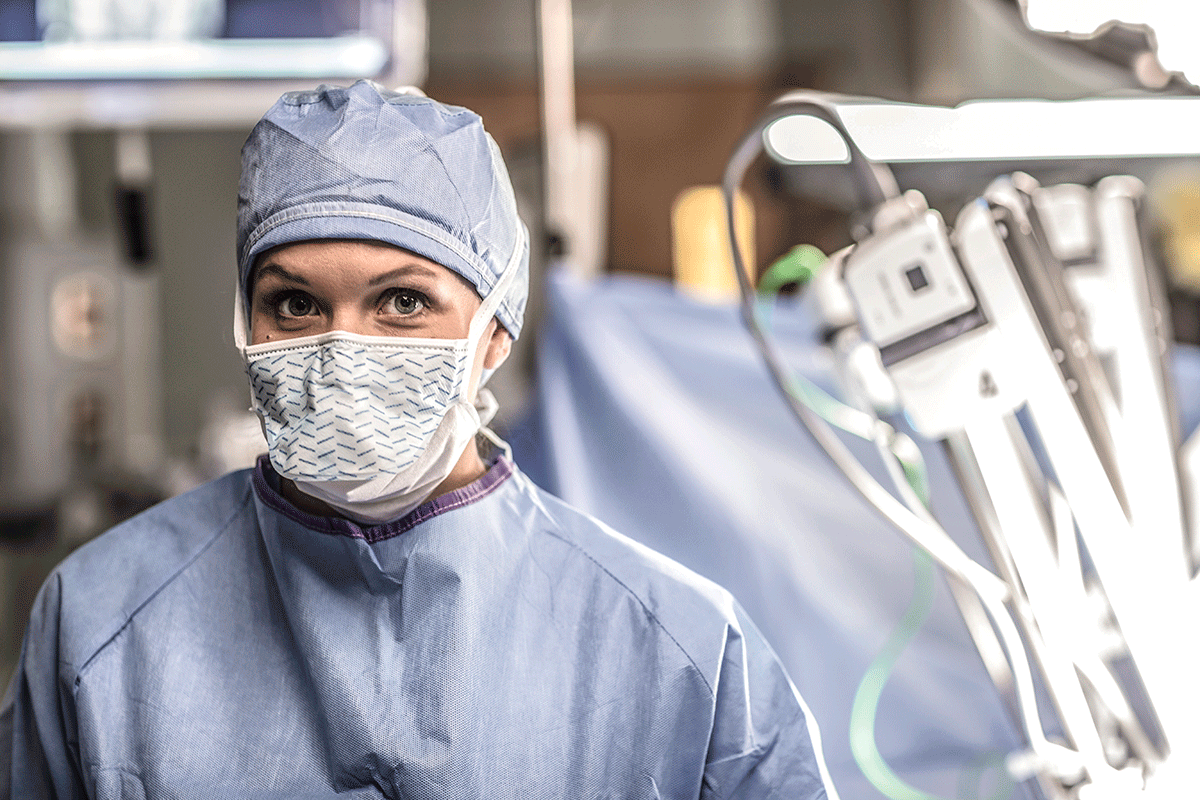If you hear about “robotic surgery” and start thinking about a SciFi movie, you’re not alone. But while it may sound like something from the future, it’s actually a reality now – and has been around for more than 20 years.
Robotic surgery is one of the latest innovations in surgery, offering a minimally invasive method of performing procedures that’s often easier on patients. Because the procedure involves a robot, though, people often have questions about what it entails.
That’s why we’re taking a few minutes to answer some commonly asked questions about robotic surgery. Read on to get the details.
Is robotic surgery performed by a robot?
No! It sounds that way, but robotic surgery is not performed by a robot. In fact, “robot-assisted” surgery would be a better way to describe this type of procedure.
During robotic surgery, a robot assists a surgeon in performing surgery, but the surgeon performs the surgery and is in control at all times. All actions the robot takes are guided by the surgeon, who is specially trained in how to use the technology and how to perform the procedure.
How does robotic surgery work?
Ready to learn something fascinating? When you learn how it works, robotic surgery really does sound like something out of the future.
During a robotic surgery procedure, your surgeon will sit at a computer console near the bedside. From there, he or she will guide the robot’s actions, starting with using the robotic arms to make small incisions in the body.
Using those incisions as an access point, the surgeon will then have the robot place a small tube known as an endoscope inside the body. The endoscope has a small camera on one end, which captures three-dimensional visualization of the inside of the body in real-time.
Guided by the camera view, the surgeon will begin making surgical motions with his or her hands, just like in a traditional surgery. Those motions are mimicked at the same time by the robotic arm, as the surgeon performs surgery without ever touching the inside of the body.
Robotic surgery using the da Vinci Surgical SystemⓇ has an added benefit. Because the robotic arm isn’t made of bone and tissue, it can move in ways a surgeon’s hands cannot. Its capabilities give a surgeon increased range of motion, dexterity and precision.
What types of surgery can be done robotically?
Many different surgical procedures can be performed robotically, and more are becoming an option as time goes on. At Northeast Georgia Medical Center (NGMC), we offer robotic surgery as an option for:
- Bariatric surgery
- Colorectal surgery
- General surgery
- Gynecologic oncology surgery
- Gynecologic surgery
- Heart surgery
- Hepatobiliary surgery
- Hernia surgery
- Thoracic surgery
- Urological surgery
The robotic surgery technology can be used in many different ways, and more ways are being innovated as time goes on. In one advanced use, for example, cardiothoracic surgeons here at NGMC can perform some valve replacements and repairs and some heart bypasses, typically an open-heart procedure, using robotic surgery instead.
It’s important to note that while robotic surgery is an option for many patients, it’s not always appropriate or recommended. If you’re undergoing a surgical procedure and wonder whether you’re a candidate for robotic surgery, talk with your surgeon and other members of your care team.
What are the benefits of robotic surgery?
Robotic surgery is a type of minimally invasive surgery, which is exactly what it sounds like. Minimally invasive surgery is a less invasive method of performing surgery than a traditional, or open, procedure.
Robotic surgery benefits patients in multiple ways. Because these procedures use smaller incisions to access the body, healing at the incision site is easier and often quicker.
The tiny robotic instruments also make a difference. Because a robotic hand is in the body instead of a human hand, less unaffected (non-diseased) tissue is touched. That means less damage, which means less need for healing. The precise movements of the robotic hand, along with the increased range of motion for the surgeon, offer additional benefits.
Overall, patients who undergo robotic surgery typically benefit in many ways, including a quicker discharge from the hospital, a faster recovery overall, less pain, less blood loss, a lower risk of complications and fewer, smaller scars.
Learn more
Northeast Georgia Medical Center is accredited as a Center of Excellence in Robotic Surgery by the Surgical Review Corporation. To date, we’ve performed more than 24,000 robotic surgery procedures. Learn more and find a surgeon.


